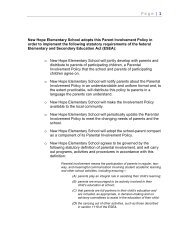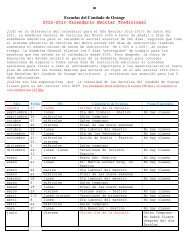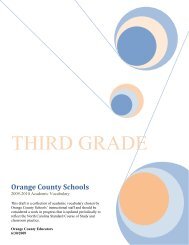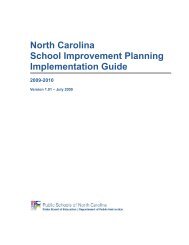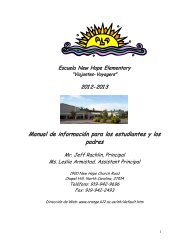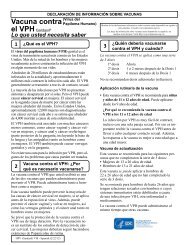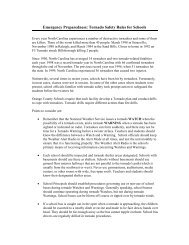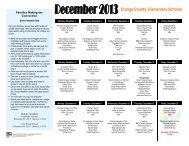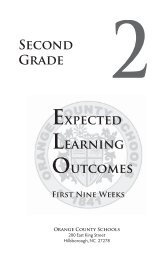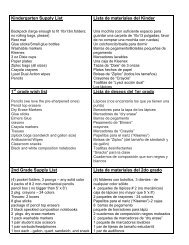Closing the Achievement Gap - Washington State School Directors ...
Closing the Achievement Gap - Washington State School Directors ...
Closing the Achievement Gap - Washington State School Directors ...
You also want an ePaper? Increase the reach of your titles
YUMPU automatically turns print PDFs into web optimized ePapers that Google loves.
What Districts Are DoingBellevue <strong>School</strong> District (www.belnet.bellevue.k12.wa.us) is working toraise standards for all students and lower <strong>the</strong> dropout rate by using AdvancedPlacement (AP) as an anchor for <strong>the</strong> overall improvement of studentachievement. In six years, <strong>the</strong> district has gone from scattered APcourse offerings to a district where all high schools offer a full AP or InternationalBaccalaureate program and district curriculum development is tiedat all levels with AP curriculum and tests. More than 70 percent of <strong>the</strong>district’s current senior class has taken at least one Advanced Placementcourse.Technology can be a great equalizer for students. The Bridgeport <strong>School</strong>District (www.bridgeport.wednet.edu) is a model for using technology toreduce <strong>the</strong> differences among students. Bridgeport went from 80 percentwhite in <strong>the</strong> mid-nineties to 86 percent Hispanic and at <strong>the</strong> same timeexperienced enrollment and funding declines. The district addressed <strong>the</strong>sechanges by retooling its schools with technology. Bridgeport began bygetting donated computers to families and <strong>the</strong>n working with AmeriCorpsand Wilderness Technology to promote a “make it and take it” program inwhich students build a computer for <strong>the</strong>mselves and take it home. With afederal grant, <strong>the</strong> district is connecting <strong>the</strong> school and homes to <strong>the</strong>Internet.The Manson <strong>School</strong> District (www.manson.org) operates a successful duallanguage program at <strong>the</strong> elementary level. The program merges <strong>the</strong> mostsuccessful aspects of second language learning with a challenging academicprogram. Students will learn to read and write first in <strong>the</strong>ir dominantlanguage and be part of <strong>the</strong> Manson Elementary Language Leveling program.They will learn about o<strong>the</strong>r subjects in English and Spanish. Instructionwill be divided so that <strong>the</strong>y will learn about half <strong>the</strong> time in eachlanguage. Lessons will not be repeated in each language but will build onone ano<strong>the</strong>r.Cultural CompetenceRace and class inequities are deeply embedded in society’s institutions.Institutions, just as <strong>the</strong> people in <strong>the</strong>m, must be culturallycompetent. This means that schools and school districts reflectpolicies, practices and structures that promote equity and respect for diversity.It also means that educators must understand <strong>the</strong> culture of poverty.As explained by Ruby Payne, in A Framework for Understanding Poverty,children bring with <strong>the</strong>m “hidden rules” and patterns of thought, socialinteraction, cognitive strategies and o<strong>the</strong>r patterns of <strong>the</strong> class in which<strong>the</strong>y were raised, and many are very different than those operating inschools driven by middle class patterns and rules.To close <strong>the</strong> achievement gap, <strong>the</strong>re must be understanding of <strong>the</strong> impact oflanguage, culture, race and poverty on student achievement. Students fromWASHINGTON STATE SCHOOL DIRECTORS’ ASSOCIATION27




